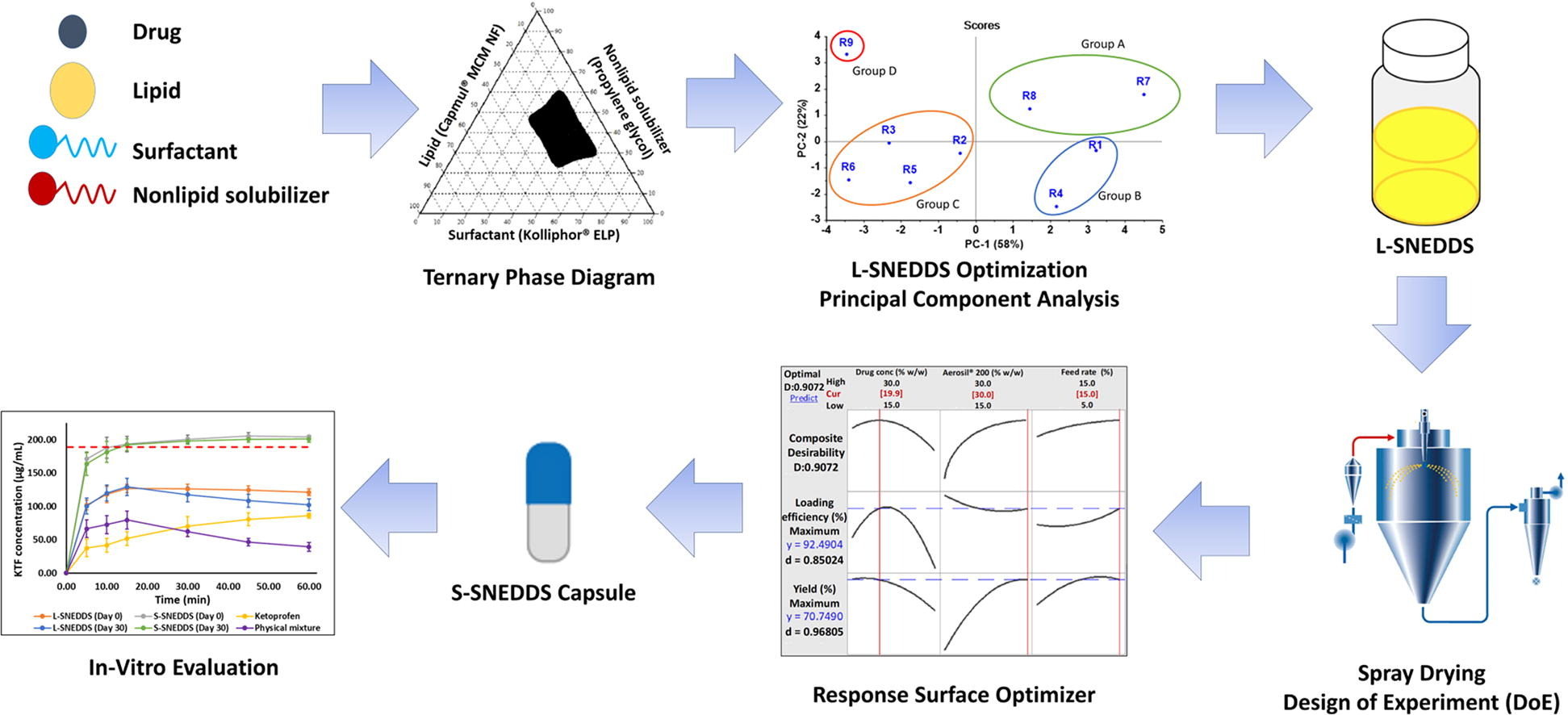Optimized L-SNEDDS and Spray-Dried S-SNEDDS Using a Linked QbD-DM3 Rational Design for Model Compound Ketoprofen

A QbD-DM3 strategy was used to design ketoprofen (KTF) optimized liquid (L-SNEDDS) and solid self-nanoemulsifying drug delivery systems (S-SNEDDS). Principal component analysis was used to identify the optimized L-SNEDDS containing Capmul® MCM NF, 10% w/w; Kolliphor® ELP, 60% w/w; and propylene glycol, 30% w/w. The S-SNEDDS was manufactured by spray-drying a feed dispersion prepared by dissolving the optimized KTF-loaded L-SNEDDS in an ethanol-Aerosil® 200 dispersion. A Box Behnken design was employed to evaluate the effect of drug concentration (DC), Aerosil® 200 concentration (AC) and feed rate (FR) on maximizing percent yield (PY) and loading efficiency (LE). The optimal levels of DC, AC, and FR were 19.9% w/w, 30.0% w/w, and 15.0 %, respectively. The optimized S-SNEDDS was amorphous, and its dissolution showed a 2.37-fold increase in drug release compared to KTF in 0.1 HCl. An optimized independent spray-dried S-SNEDDS verification batch showed that the predicted and observed PY and LE were 70.49% and 92.49 %, and 70.02% and 91.27%, respectively. The optimized L-SNEDDS and S-SNEDDS also met their quality target product profile criteria for globule size less than 100 nm, polydispersity index less than 0.400, emulsification time < 30s, and KTF L-SNEDDS solubility 100-fold greater than its water solubility.
Read more
Vivek D. Patel, Vishal Rathod, Rahul V. Haware, William C. Stagner, Optimized L-SNEDDS and Spray-Dried S-SNEDDS Using a Linked QbD-DM3 Rational Design for Model Compound Ketoprofen, International Journal of Pharmaceutics, 2022, 122494, ISSN 0378-5173,
https://doi.org/10.1016/j.ijpharm.2022.122494.

